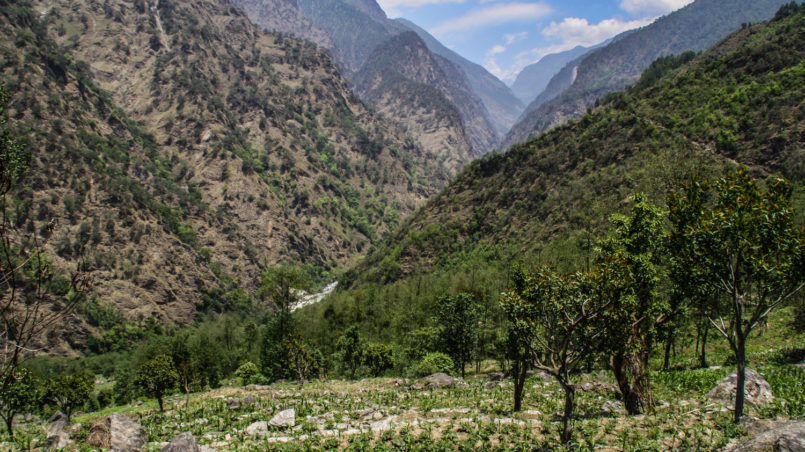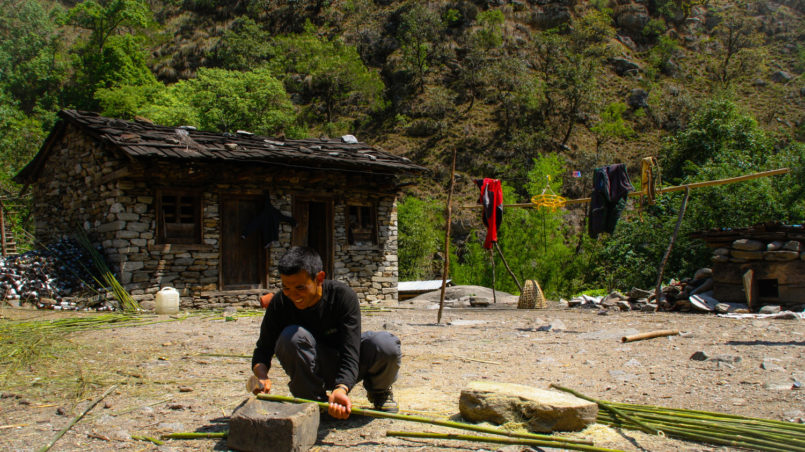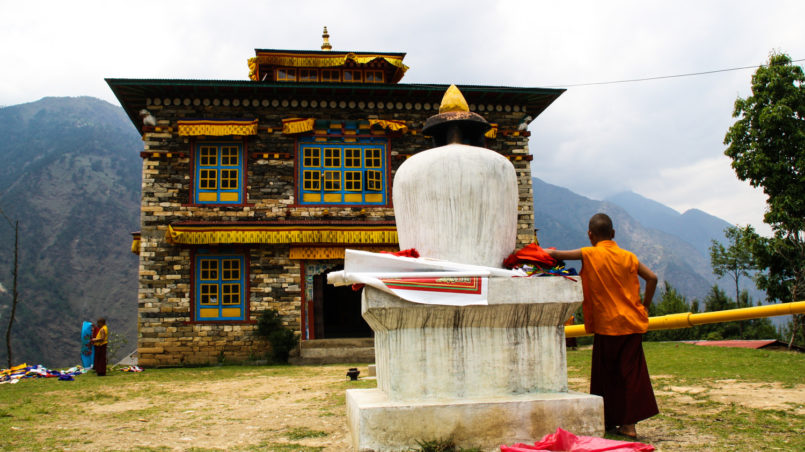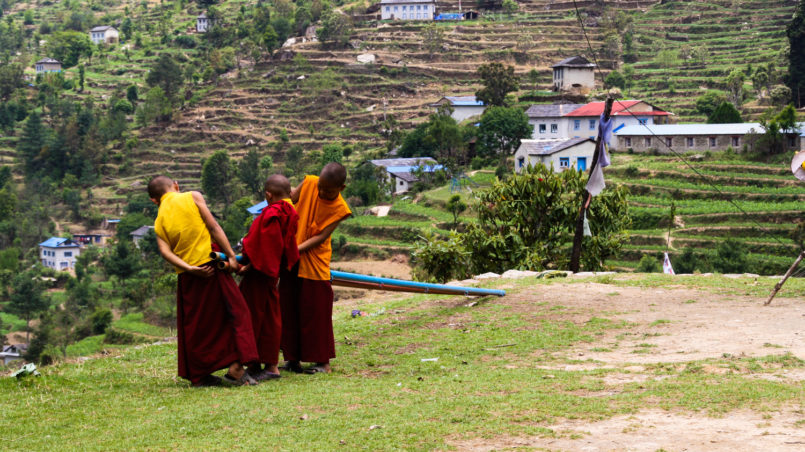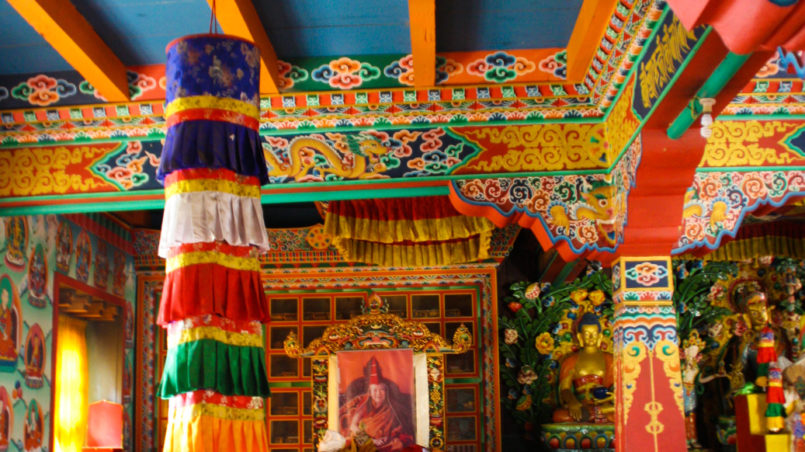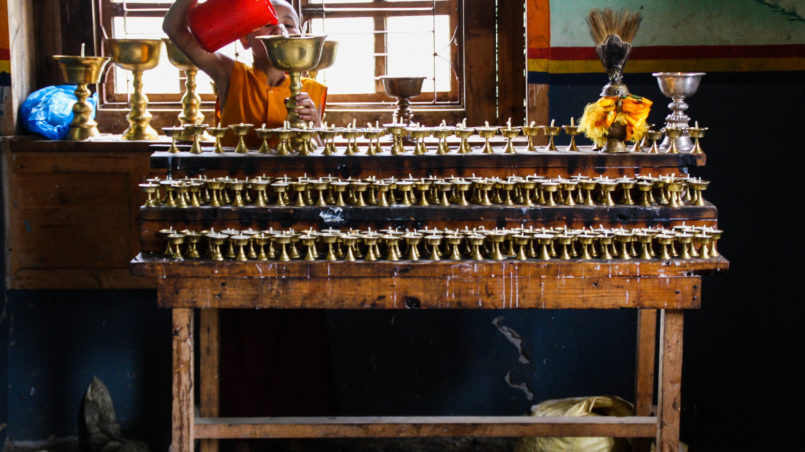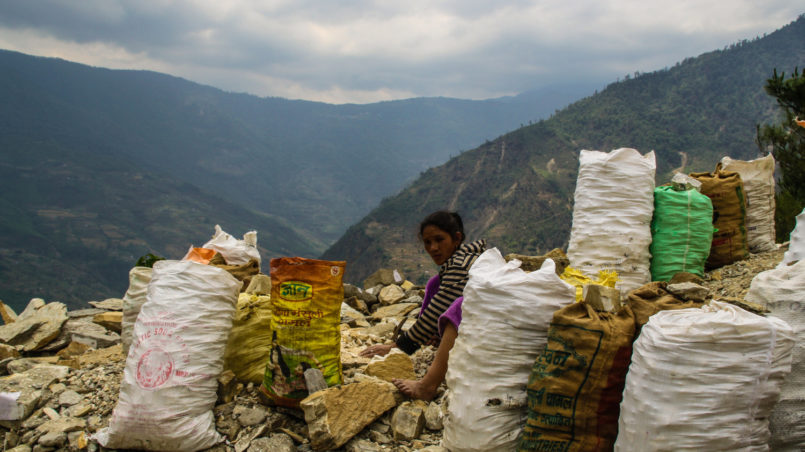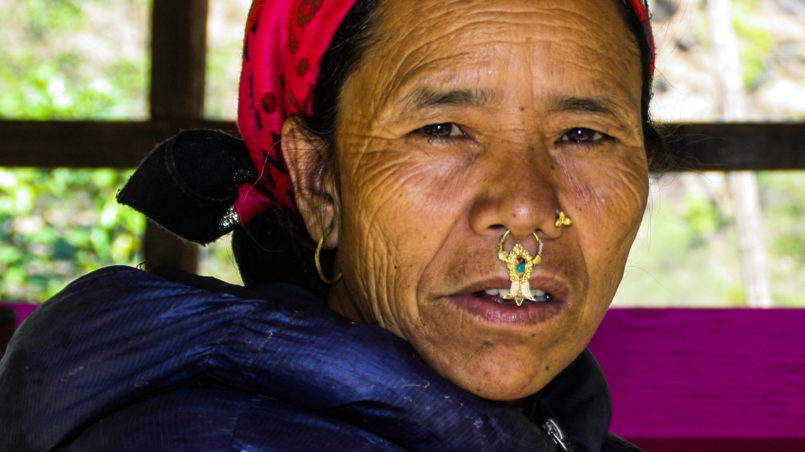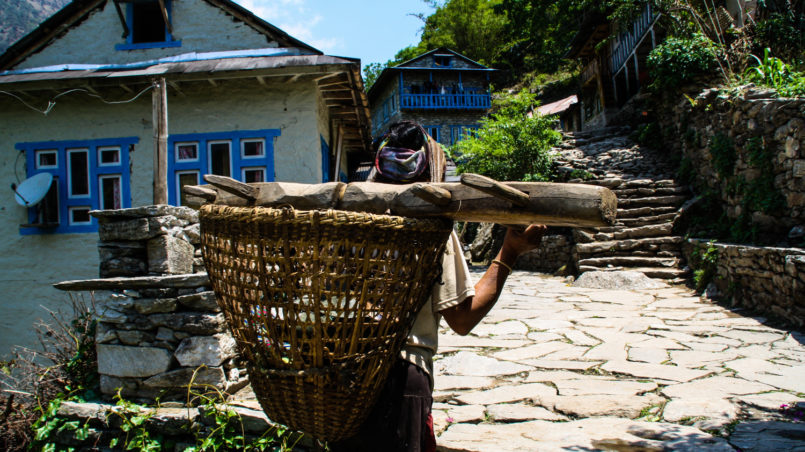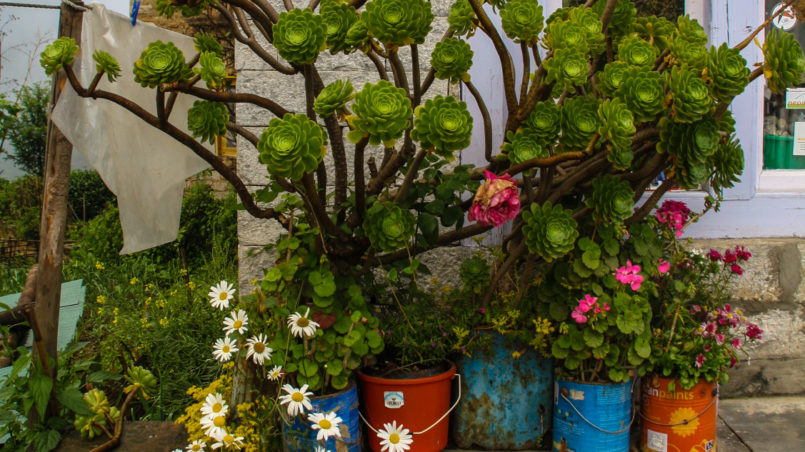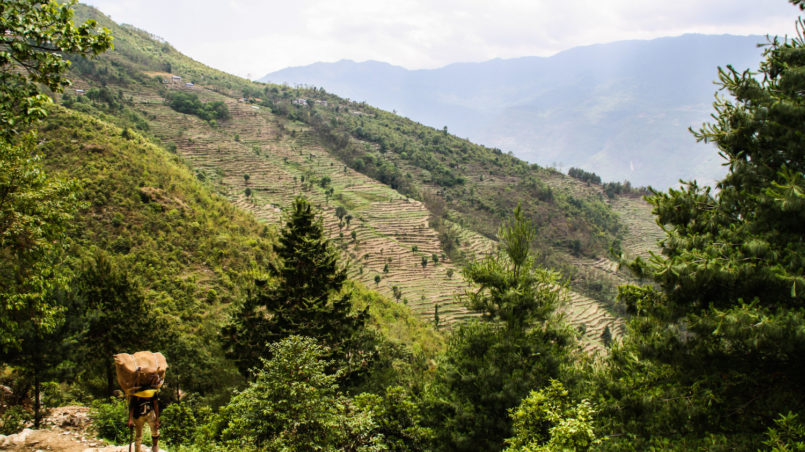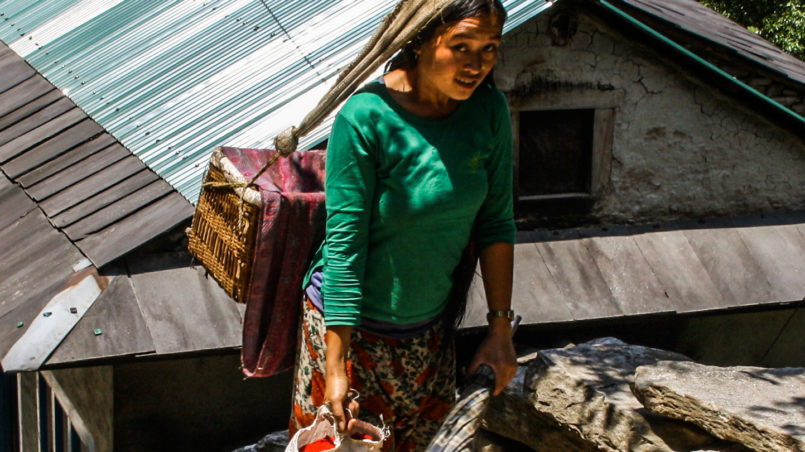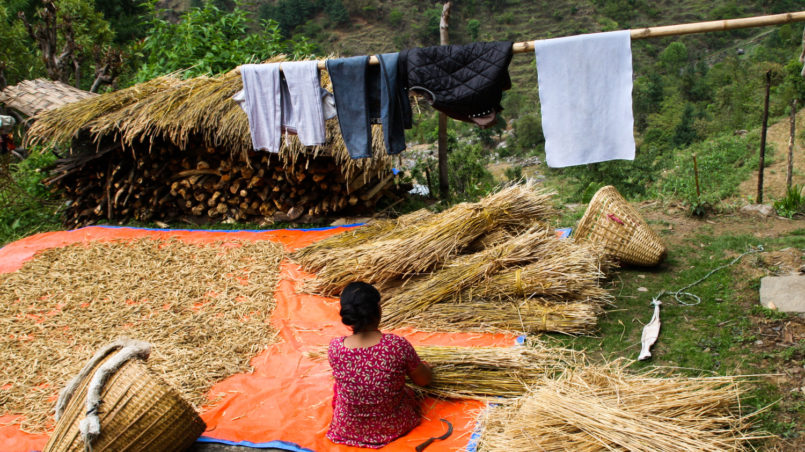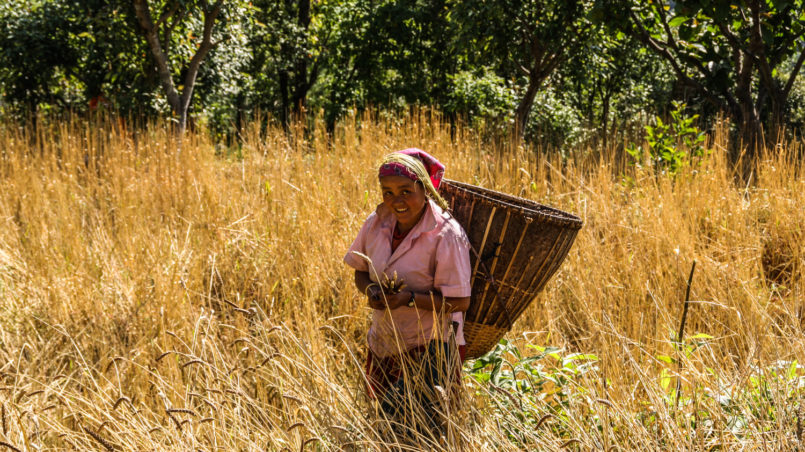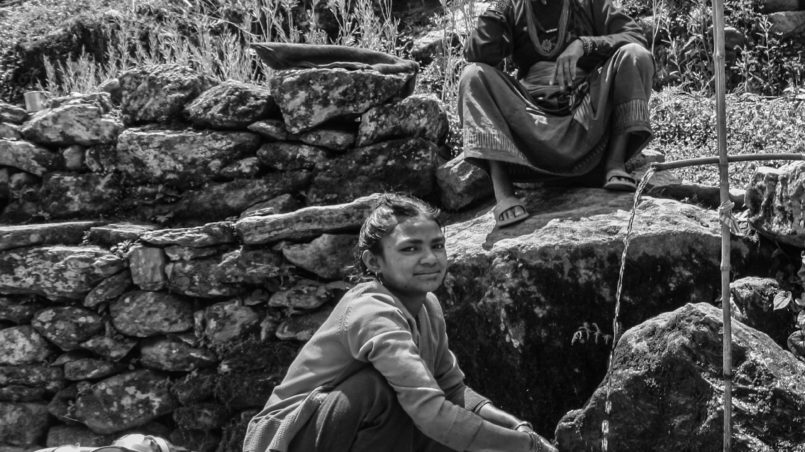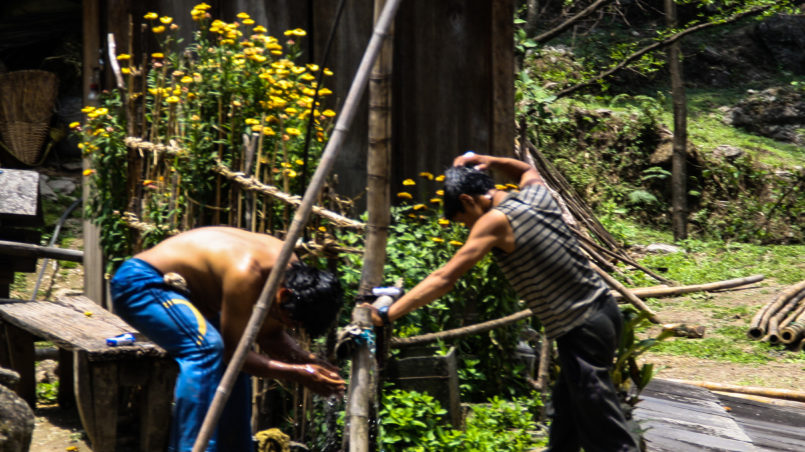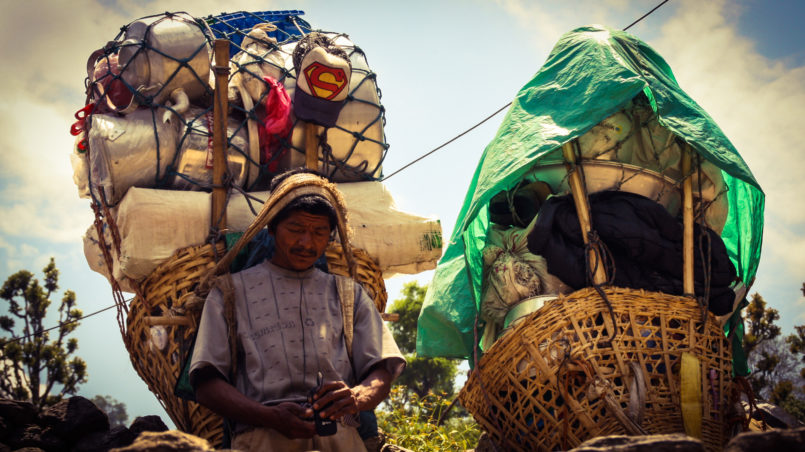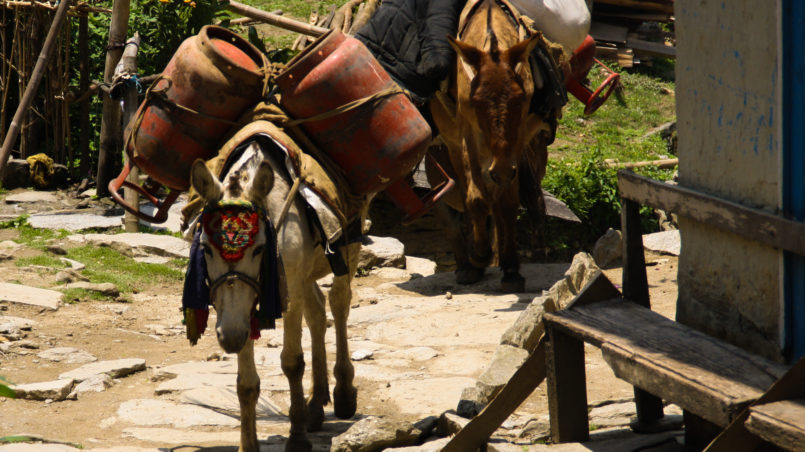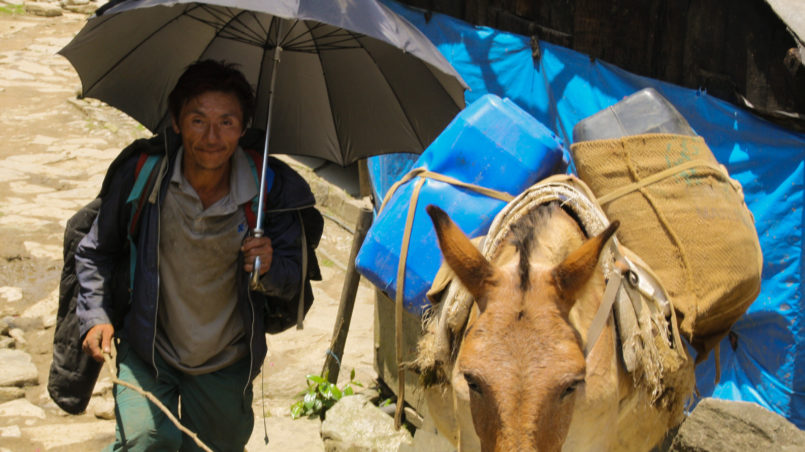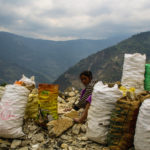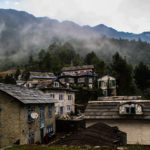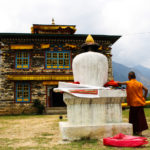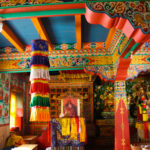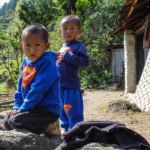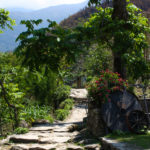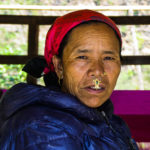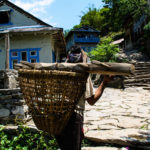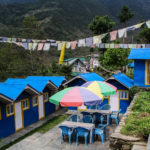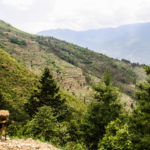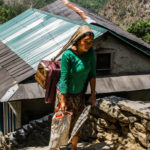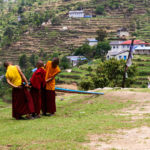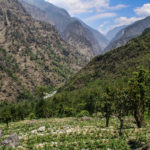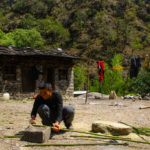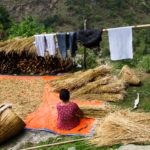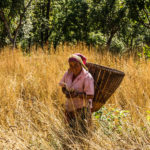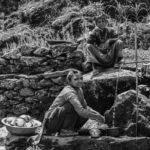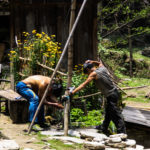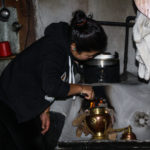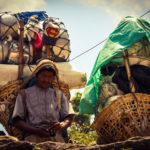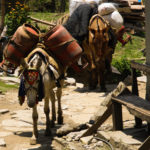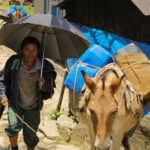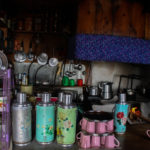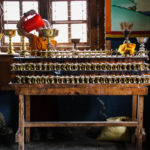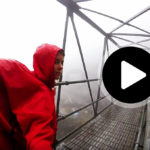Another day … another challenge
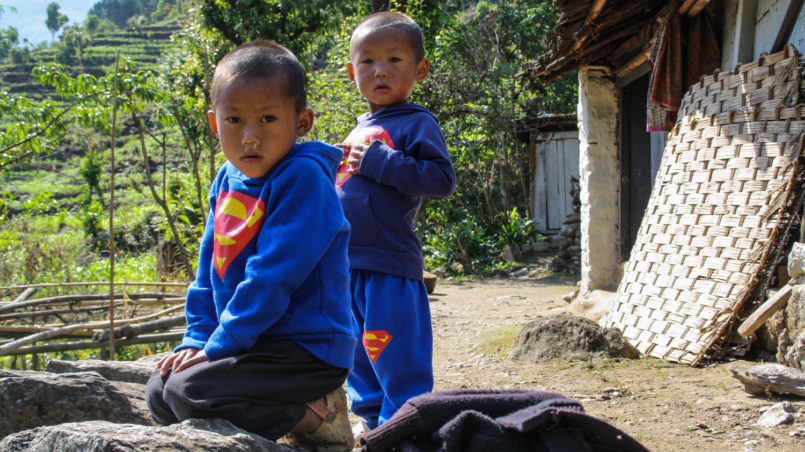
As soon as I wake up I rush downstairs to get my clothes – I had left them to dry but the cold temperatures overnight meant that everything was still wet. I hang the wet clothes on my drying rack (which by the way is my backpack – you quickly learn to improvise up in the mountains!). The warm morning sun will hopefully dry them in no time. It is a nice downhill walk with no rain, but as we reach the river we know that it will be a “nice” uphill walk again, so we each get a bamboo stick as it will help us throughout the trek. Within five minutes of reaching the river we approach a suspension bridge- it was the first time in my life I had seen such a bridge. I am so immersed in my thoughts and listening to my music, I don´t realize that a whole herd of donkeys is just behind me eagerly waiting to cross as well. The whole bridge is shaking and I want to go back but there is no such possibility. I start to gather all my courage together, look straight ahead and just walk, hoping and praying that I don’t fall. On the other side of the bridge I see Nepalese women giggling and laughing about this incident. As soon as I make it to the other side safely, my heart is beating so fast and I need to sit down, much to the amusement of the local women.
It is a very hot day and as I reach the top of the hill I see a few monk children coming towards me in their traditional red & yellow robes. As they make their way down, I follow the path up a steep narrow trail, wondering where it will lead. Once I reach the highest point, I see the most beautiful monastery just in front of me. It is very colorful and bustling with the sounds of monks from all age groups; children, adolescents, adults and elderly; all of whom are busy in their own work. From afar I hear a voice saying; “Welcome to our monastery- please feel free to visit”. I walk towards the entry door, take off my shoes (which is common before entering a monastery), and let one of the younger monks guide me. As I look around I am speechless- I don’t know exactly what it is or how to put it into words but there is something very special about this place, something I have never felt before. I could feel the positive energy flowing through my body filling me with only one thing – pure HAPPINESS.
Sometimes the best things in life lie off the beaten track and we should never be too busy to take a moment and experience something new…You may not know where it leads, but it will be worth it.
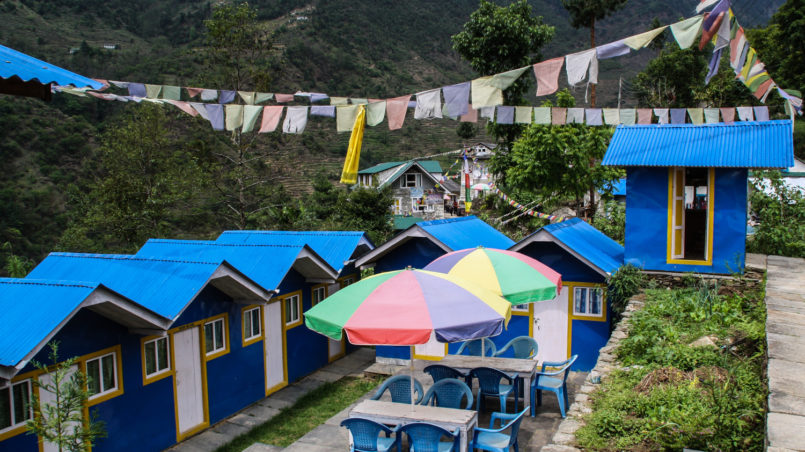
On our trek towards the place called Bupsa, our overnight stay, we meet one young man coming towards us from the opposite direction. He is almost running, or I should say jumping, and looking extremely happy. We stop to talk to him and find out that he had just summit Everest, after having “failed” twice in previous years, due to the weather conditions. When our guide sees him he says: “No, I don´t believe it, you didn’t summit Everest- your face doesn’t look as sunburned as it should.”
Unfortunately it is true that some people do fake their own summit ..
He is the first person I ever met that had touched the highest point on earth. Of course we are all very curious and bombard him with a million questions. We find out about the use of performance enhancing drugs while ascending to higher altitudes. Due to lower oxygen at high altitudes, blood vessels are constricting and can cause AMS (altitude mountain sickness), which can cause severe & life threatening symptoms, like HAPE (high altitude pulmonary edema) and HACE (high altitude cerebral edema). Drugs like steroids (e.g. Dexamethasone- the most used & with many side effects), Viagra (it relaxes blood vessels and hence increases blood flow), diuretics (e.g. Acetazolamide-Diamox) and even “blood doping” -either by using autologous transfusions (injections of one´s own blood) or by using EPO (Erythropoietin- a hormone which increases the production of red blood cells and therefore delivers more oxygen to the body ) are seen. Devon O’Neil writes in his article “Climbing’s little helper”
http://www.outsideonline.com/1914501/climbings-little-helper
about a statement from Johnson, the Everest ER doctor, who said:
“I would be shocked if 50 percent of Everest climbers aren’t using dex (dexamethasone) at Camp III and above. I’ve had highly paid, sponsored climbers and guides -people whose names you’d know right away—ask me for dex. They don’t want their clients or anyone else to know they’re using it.”
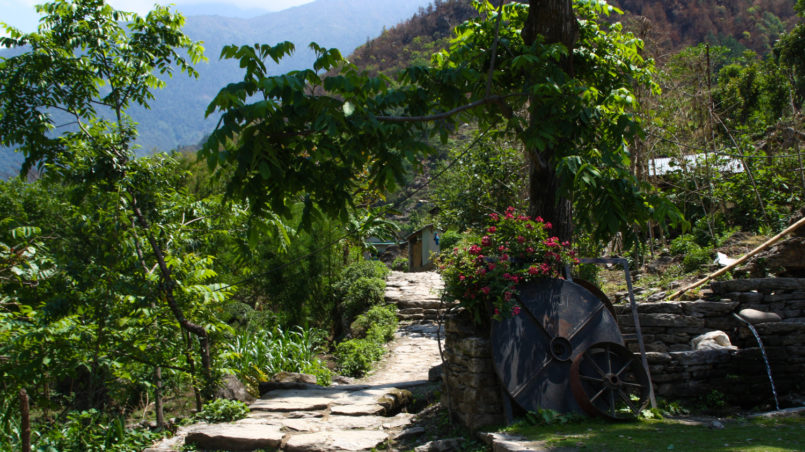
Just a few days later I got lucky enough to meet the second person who has touched Mt. Everest- this time not out of pleasure, but because it is his job to do so. In my next article you can read all about first hand experiences of “Kasang Sherpa”, the man who summited Everest not once, but four times. He told me all about the spiritual significance of Mount Everest and the difficulties he had to overcome while working as a high altitude Sherpa for many years.
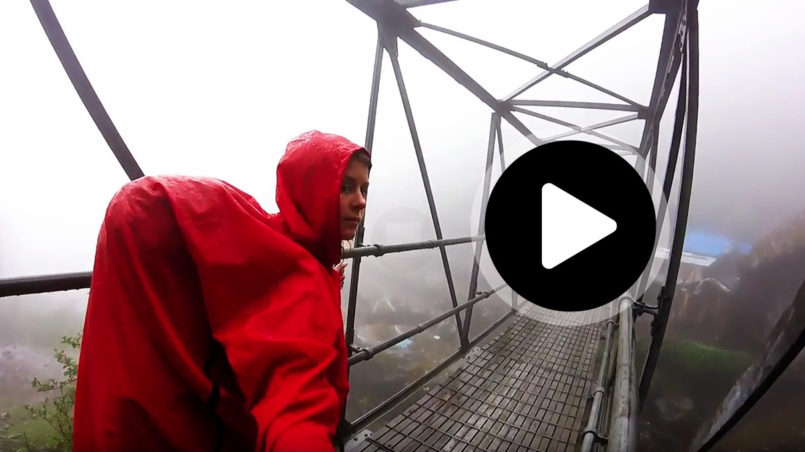
Being in a foreign country always leads to funny incidents, as traditions vary in many different ways and things that are normal to me might be totally strange for someone else. One of these funny incidents happened to me tonight while I was ordering dinner. I was asking for “Dal Bhat” but please “without Bhat”. The lady kept looking at me very confused and I did not understand why. Later I found out the reason why is the rice and rice is THE MAIN ingredient in Nepal- you literally have it along with any food. So I was basically asking for pasta Bolognese but without pasta, no wonder the lady did not understand me :).
During the night I wake up at around 4 am, feeling very sick and unable to sleep anymore. I go outside for a walk towards the small monastery, which is just around the corner. After some time I return back inside and attempt to sleep a little bit more, but when I wake up I still feel sick. I pack my things and go downstairs in the dining hall, I look to the table and see the Tibetan bread (which I ordered the previous night for breakfast and I was very much excited to taste) waiting for me, but just the thought of tasting this deep fried bread made me feel even more sick. I am only able to drink a few sips of water for breakfast but then it happens- I run outside as my body isn’t even able to keep anything down – not even water. I had to face the fact that I had food poisoning, but I didn’t want this to stop me and in the hope that I will feel better after some time I say: “Let´s go towards Lukla, to our next Destination.”
Not even 10 minutes into the trek I have to accept the fact that I will not be able to walk today and with tears in my eyes I return to the guesthouse, feeling like my body is defeating me.
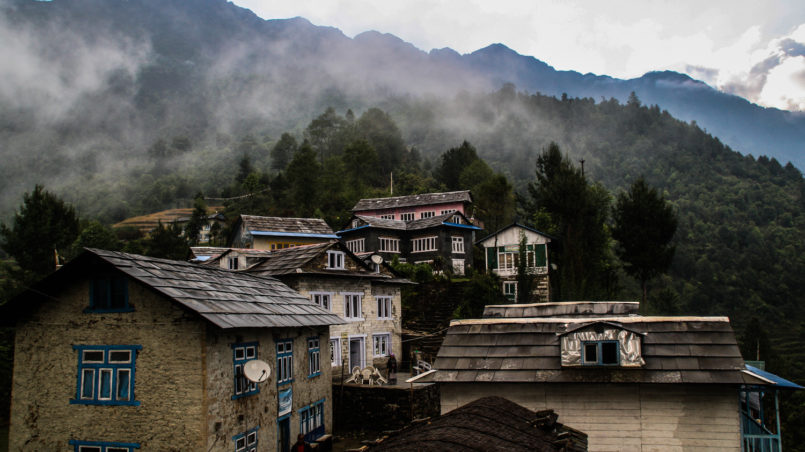
Throughout the day I am trying to rest as much as I can, while my body is clearing itself of toxins. This is definitely the worst food poisoning I have ever had. I am better by the evening, and am able to finally keep something down. During the night, I don’t know what time it is as laying in bed all day in this condition made me lose all awareness about everything around me, but I hear loud music coming from outside. I am not sure if I am dreaming or if it is reality but it sounds like fun! The next morning I ask Pasang, our guide, and he tells me that there was a big celebration happening at the monastery and all the village joined in. Too bad I was feeling sick that day …
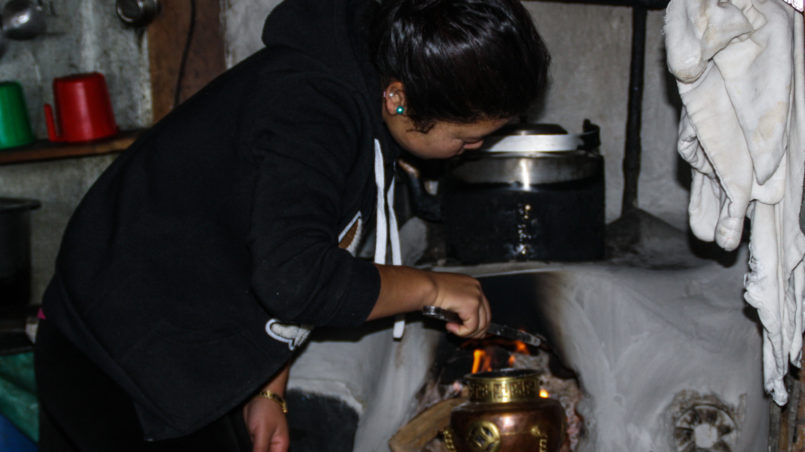
The next morning, at 6.00 am, I am feeling better and even have some Chapati (traditional flatbread, also commonly called Roti) with honey for breakfast and a lot of water to re-hydrate myself. Slowly, slowly we start our second attempt to go towards Lukla – this time, hopefully, succeeding. Actually, from Saleri you don’t need to go to Lukla to reach Everest Base Camp (EBC), but as we needed to get our TIMS cards (helps to keep our information in an electronic database system to guarantee our well-being and security) this deviation is necessary. Halfway through our trek it starts raining, just before we have to go downhill for about 2 hours. The road is extremely muddy and smelly, as solid and liquid waste from the donkeys is found everywhere along the trail. We have to be very careful not to slip, watching every step carefully. Once we reach the bottom, our guide tells us that Lukla is just about 1.5-2 h away from here; of course – UPHILL. It is the last word I want to hear in this instant; my legs were really sore from the previous days and I was still feeling nauseated, but again, one step at a time.
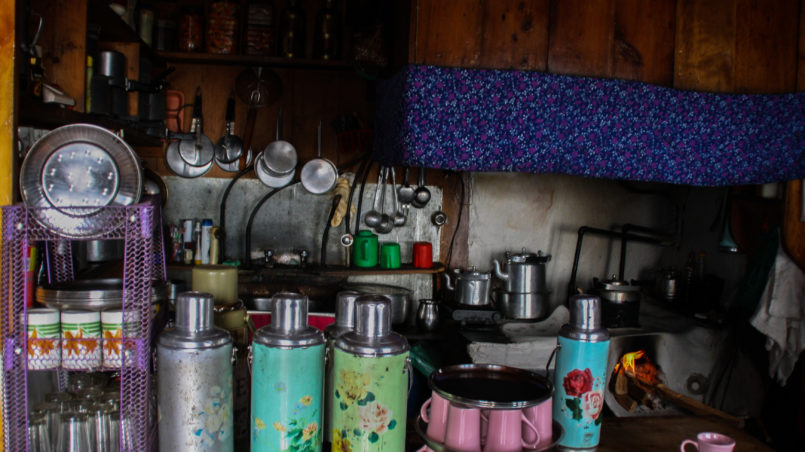
The weather is getting worse and worse, rain is becoming heavier, and the fog makes it difficult to see even the person in front of you. We struggle, it’s getting cold as well, but we keep pushing and dragging ourselves forward. I did not think that we’d make it to Lukla that day, but we did – we arrive after dark, looking and feeling like zombies. We were walking up and down for about 12 hours.
As soon as we open the door to the guesthouse we are facing a room full of people – we totally did not expect this since the previous nights we have been almost alone on the trek, as well as in the guesthouse- we only met the Indians, one British guy and a French family.
To reward myself I try the Yak stake on the menu, along with some French fries and it tastes delicious. You could feel the different energy in the guesthouse, it was simply more touristic and felt less friendly. It is then time to pay and charge your electronics: it is around 2USD for one full charge and 3 USD for using the Wi-Fi. To avoid this fee we decide to go to the so called “Starbucks” around the corner- one of the many coffee & bakery shops in Lukla, which were not available the previous days.
The good news is that tomorrow we almost have a rest day, in order to acclimatize to the higher altitude (Lukla lies at 2860 m) and we can sleep late, as we only need to walk for a few hours.
Note: The following foto series shows some images taken along the way, attempting to show daily life activities of local people.

